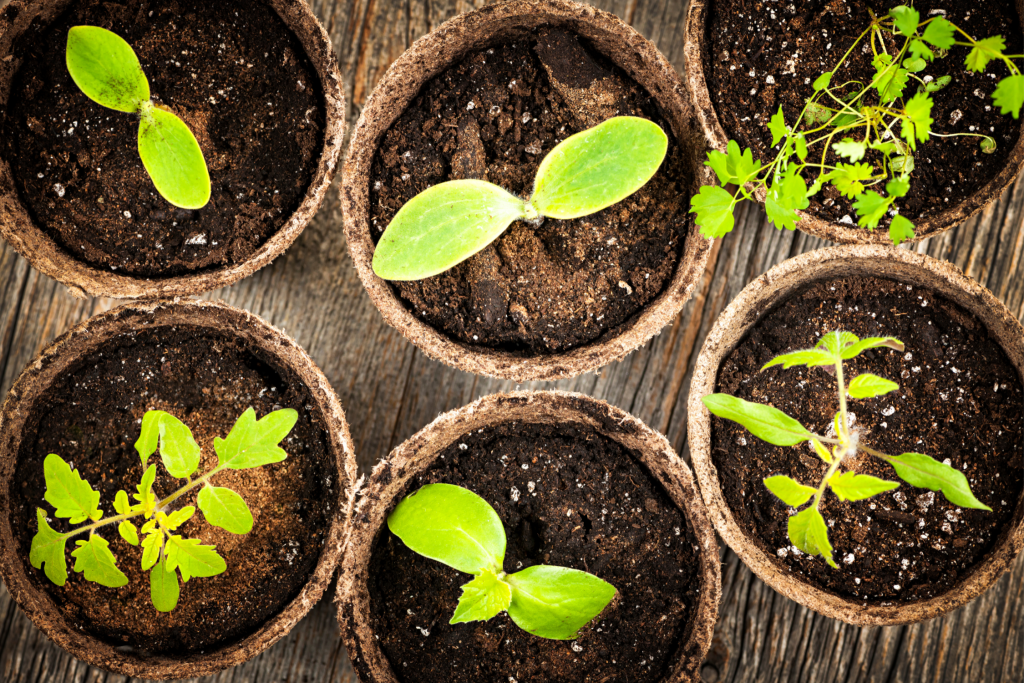
Peat soil, with its high organic matter content, excellent water retention, and acidic pH, offers a unique environment for various plants. If you have access to peat soil and are wondering which plants will thrive in it, this guide will help you choose the best fruits, vegetables, ornamental plants, and herbs for your garden.
Fruits
- Blueberries (Vaccinium spp.):
- Why Peat Soil?: Blueberries thrive in acidic soil with a pH between 4.5 and 5.5, making peat soil an ideal medium.
- Planting Tips: Ensure good drainage and add organic mulch to maintain soil moisture and acidity.
- Cranberries (Vaccinium macrocarpon):
- Why Peat Soil?: Like blueberries, cranberries prefer acidic, moist soil.
- Planting Tips: Plant cranberries in low-lying areas where water can accumulate, mimicking their natural bog habitats.
- Raspberries (Rubus idaeus):
- Why Peat Soil?: Raspberries benefit from the moisture retention and organic matter in peat soil.
- Planting Tips: Provide support for the canes and ensure good air circulation to prevent fungal diseases.
Vegetables
- Carrots (Daucus carota):
- Why Peat Soil?: Peat soil’s loose texture allows for the easy growth of long, straight carrots.
- Planting Tips: Ensure the soil is well-drained to prevent root rot.
- Potatoes (Solanum tuberosum):
- Why Peat Soil?: Potatoes grow well in the loose, well-aerated structure of peat soil.
- Planting Tips: Hill the soil around the plants to encourage tuber formation and prevent greening.
- Celery (Apium graveolens):
- Why Peat Soil?: Celery requires consistently moist soil, which peat can provide.
- Planting Tips: Keep the soil evenly moist and add compost to boost fertility.
Ornamental Plants
- Azaleas (Rhododendron spp.):
- Why Peat Soil?: Azaleas thrive in acidic soil with good moisture retention.
- Planting Tips: Mulch around the base to maintain soil moisture and acidity.
- Rhododendrons (Rhododendron spp.):
- Why Peat Soil?: Similar to azaleas, rhododendrons prefer acidic, well-drained, and moisture-retentive soils.
- Planting Tips: Plant in partially shaded areas to protect from harsh sunlight.
- Camellias (Camellia spp.):
- Why Peat Soil?: Camellias enjoy acidic soil with good drainage and consistent moisture.
- Planting Tips: Water regularly and protect from strong winds.
Herbs
- Thyme (Thymus vulgaris):
- Why Peat Soil?: While thyme prefers well-drained soil, it can adapt to peat soil with proper drainage.
- Planting Tips: Ensure the soil is not waterlogged, and provide full sun.
- Parsley (Petroselinum crispum):
- Why Peat Soil?: Parsley benefits from the moisture-retentive properties of peat soil.
- Planting Tips: Keep the soil consistently moist and provide partial shade in hot climates.
- Mint (Mentha spp.):
- Why Peat Soil?: Mint thrives in moist, rich soil, making peat soil ideal.
- Planting Tips: Plant in containers to prevent aggressive spreading.
Conclusion
Peat soil provides a unique growing medium that can support a diverse range of plants, particularly those that thrive in acidic and moist conditions. By selecting the right fruits, vegetables, ornamental plants, and herbs, you can create a vibrant and productive garden that leverages the unique properties of peat soil. However, it’s important to consider the environmental impact of using peat and explore sustainable alternatives where possible to ensure the long-term health of your garden and the planet.



